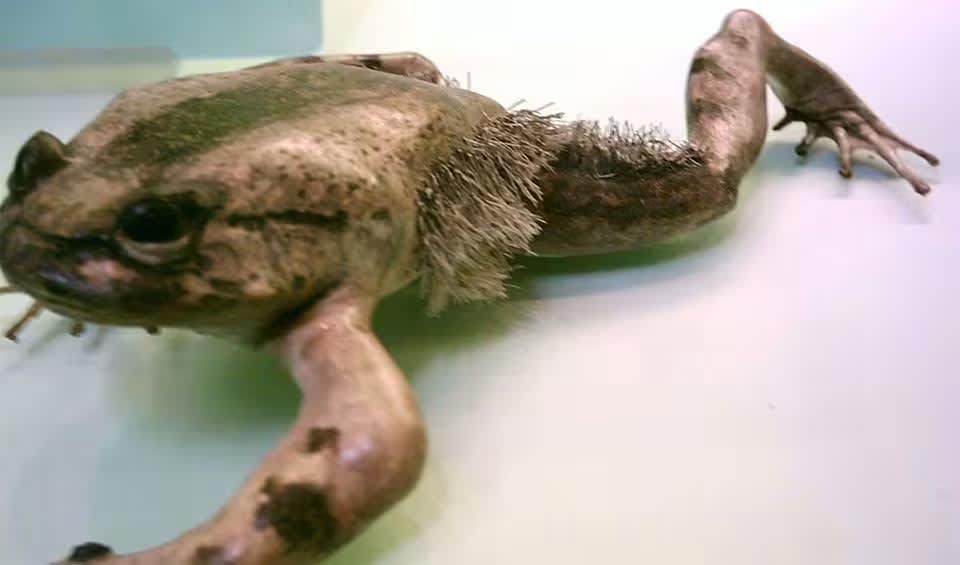Trichobatrachus – Hairy frog
The perdominantly terrestrial hairy frog live in subtropical and tropical forests & rivers of West Africa
Some frogs are nothing like the common variety we’re used to. Hairy frogs will go as far as breaking their bones to unleash a hidden ace up their sleeve.
This frog boasts its specialized defense mechanism. It has sharp claws beneath their toes, which they can puncture through their own skin in times of danger. This remarkable adaptation allows them to transform their feet into formidable weapons, effectively becoming “Wolverine frogs” when threatened. This self-inflicted injury may seem extreme, but it serves as a last line of defense against predators.
Males of the Trichobatrachus genus exhibit another remarkable characteristic during the breeding season. They produce long, hair-like strands of skin and arteries, which are used for two essential purposes. These “hairs” serve as a means for the male frogs to increase their oxygen intake through their skin, enabling them to sustain their metabolic needs while engaging in extended parental care. Additionally, these strands are employed for brooding, as the males wrap their eggs with these unique structures. This protective wrapping helps safeguard the eggs and may offer some level of protection from potential threats.
Hairy frogs are native to Central Africa, where they inhabit freshwater environments, including slow-moving streams and rivers. Their unique adaptations and behaviors underscore the diversity and complexity of amphibian life in the region.
Species in this genus
Hairy frog
The predominantly terrestrial hairy frog lives in subtropical and tropical forests & rivers of West Africa

